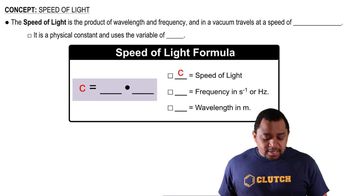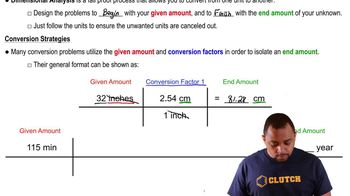Textbook Question
Using your knowledge of metric units, English units, and the information on the back inside cover, write down the conversion factors needed to convert (a) km/hr to m/s
 Verified step by step guidance
Verified step by step guidance



Using your knowledge of metric units, English units, and the information on the back inside cover, write down the conversion factors needed to convert (a) km/hr to m/s
Using your knowledge of metric units, English units, and the information on the back inside cover, write down the conversion factors needed to convert (c) mi to km
Using your knowledge of metric units, English units, and the information on the back inside cover, write down the conversion factors needed to convert (d) ft3 to L.
(b) The lung capacity of the blue whale is 5.0×103 L. Convert this volume into gallons.
(c) The Statue of Liberty is 151 ft tall. Calculate its height in meters.
(d) Bamboo can grow up to 60.0 cm/day. Convert this growth rate into inches per hour.